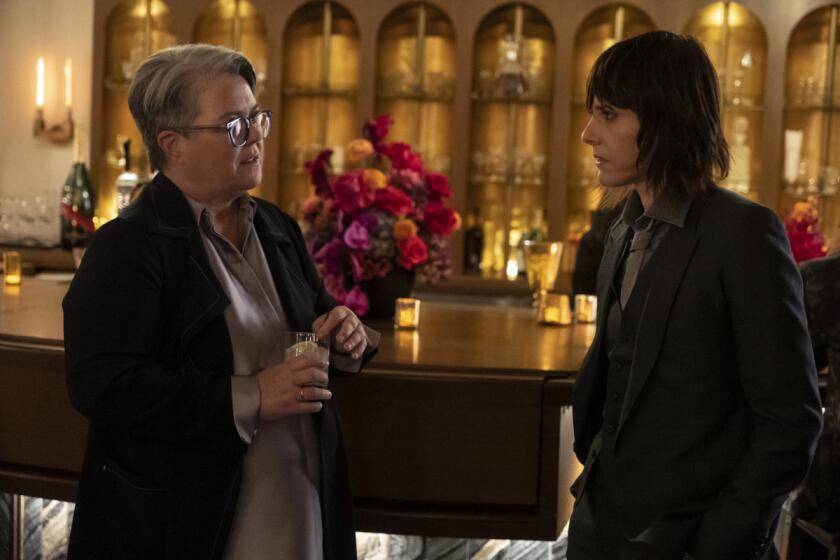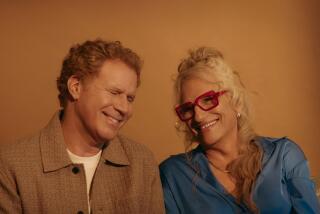‘The L Word’ failed a trans TV pioneer. 17 years later, he’s back to repair the damage
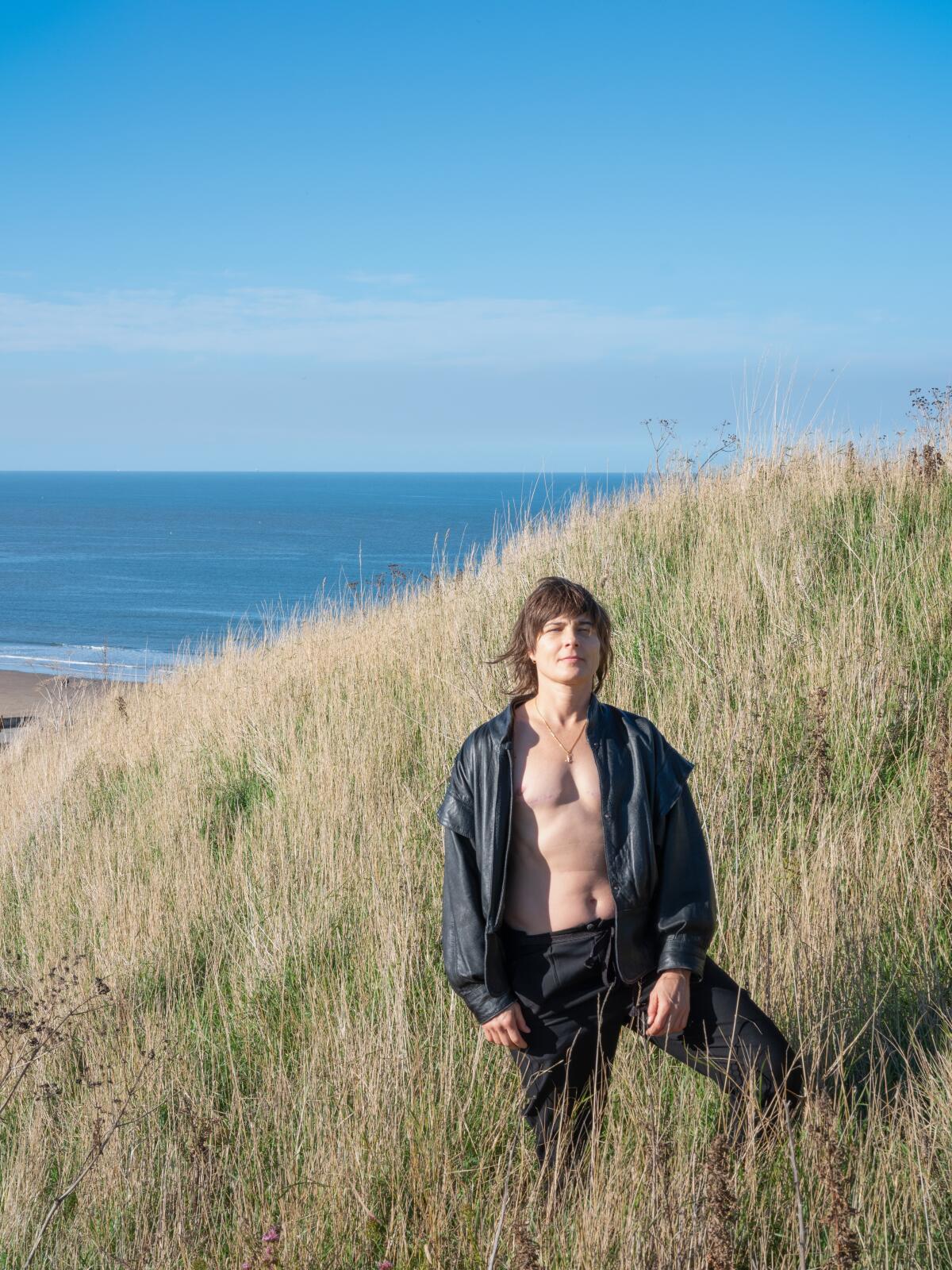
As a trans and nonbinary actor, a true punk, and a kid who grew up playing Dungeons and Dragons, Daniel Sea is no stranger to complexity, the power of storytelling and the thin line between what happens on set and in everyday life.
From 2006 to 2009 Sea played Max Sweeney, a kindhearted yet complicated transgender computer programmer on Showtime’s now-iconic series “The L Word.” While Sea, and Max, were ahead of their time in many ways, Hollywood was not ready to fully embrace nonbinary actors, trans characters, or trans storylines during the time that his four seasons were filmed.
Within the framework of a groundbreaking show about lesbians in Los Angeles, Max, the first recurring transmasculine character on TV, offered possibility for trans futures while also bearing the brunt of transphobia from the writers room and from the press. Sensationalized storylines were common, and Max was often presented as the antithesis of the corporate, femme-centric main characters; he was even bullied by them. At times reduced to a caricature of the pitfalls of masculinity and unfounded anxieties about trans and genderqueer life, Max shouldered the burden of representing not just trans men, but also butches, gender non-conforming people, and rural and working-class queer communities.
A self-described ‘superfan’ explains why the current season of Showtime’s lesbian soap, ending tonight, has drawn more fire than most.
What often gets lost, obscured, and even erased in the discussion of flawed trans representation in the original “L Word” and the investment in more nuanced trans storytelling in reboot “Generation Q,” now in its third season, is an acknowledgment of the gender-expansive actor who played Max, the interventions they attempted to make in the character’s arc, and the humanity with which they imbued him.
After more than a decade away from television, Sea returns Friday as Max to “The L Word: Generation Q” in an appearance sure to satisfy fans who’ve long called for justice to his story. The season’s fourth episode, “Last to Know,” finds the character thriving as a trans elder — a beautiful rarity in the depiction of trans people on screen. Sea spoke to The Times recently about his punk rock roots, Max Sweeney and trans happiness, returning to a more equitable Hollywood, and more. The following has been edited for clarity and length.
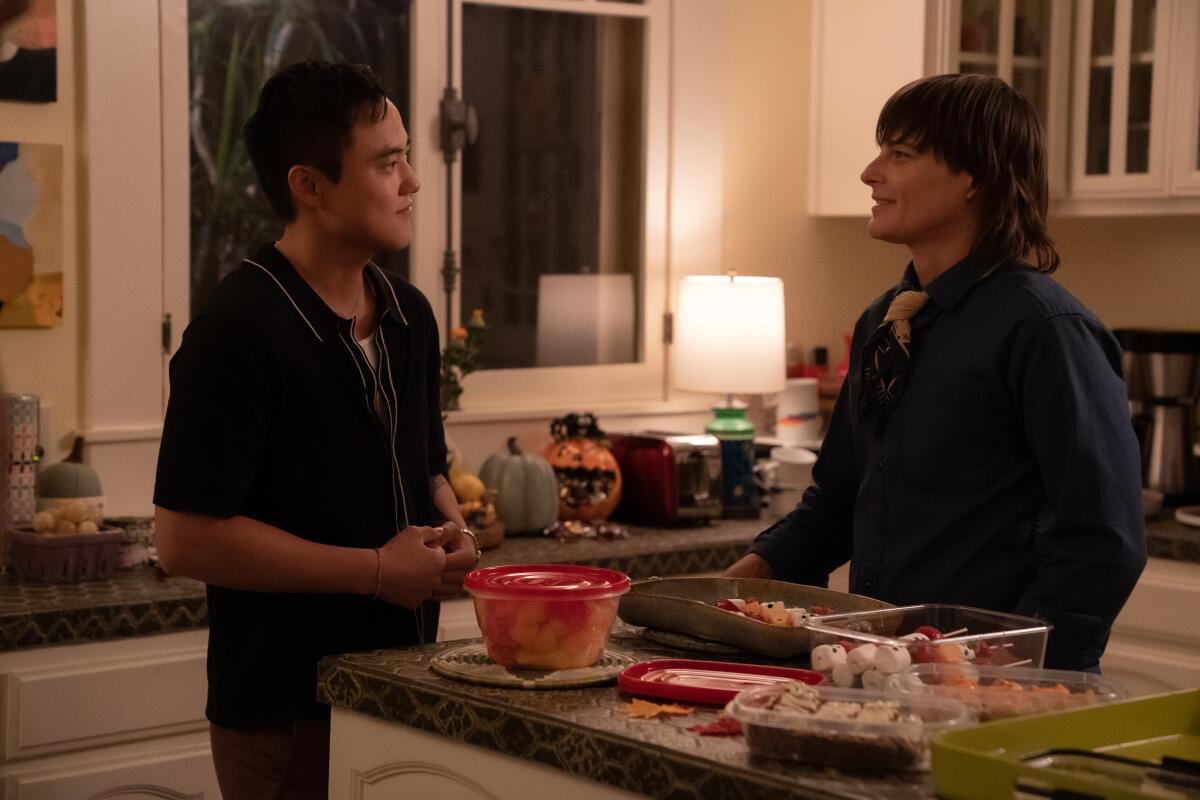
While most people know you for your work as Max Sweeney on “The L Word,” queer punk feels like a big part of your energy on-screen. Can you talk a little bit about that and your connection to punk?
I come from the punk scenes of L.A. and the San Francisco Bay Area. As a young artist I didn’t see myself reflected, so I took myself to an underground community who helped me see myself. As a young teen in the late ‘80s in L.A. I encountered punk music such as the Bags, Catholic Discipline, Black Flag, and Chumbawamba. This music shined a beacon of joyful living outside the mainstream and pointed me in a queer direction.
Growing up in the ‘70s and ‘80s on the Westside of L.A. with artist parents of the 1960s generation, my filmmaking father coming out in the late ‘70s, I developed in a house that valued play and questioned everything. From a young age I have embodied different characters. Later, when I left home for the Bay Area, as many queer and trans people did in the pre-internet early ‘90s, I found a community in punk that saw me and helped me become a working artist at the age of 19, touring internationally with an East Bay punk band the Gr’ups, and organizing with both the Gilman Street and Q-TIP, Queers Together in Punkness, collectives.
During this time I studied acting and improv at Oakland’s Laney Community College, Peralta Colleges, birthplace of the Black Panthers, and I felt honored to be in the learning environment that they and their legacy created. Studying theater arts there is a deep part of my approach. Years later when I got the chance to take my performance into the mainstream of TV, I did my best to carry this spirit of radical art and liberation movements of the Bay Area with me, for guidance and inspiration. I’ve carried that, as well as the homecoming that I found in the queer and punk avant-garde, with me throughout my life.
That totally explains the Gossip poster in Max’s room when he’s introduced as a character in the original show. It seems to me we are also talking a bit about queer communication through gesture, which is a big part of how trans people have always engaged with visual media both as actors and as viewers.
I wanted to bring some of my queer community to the space, so I put in posters from my friends’ bands. “Gesture” is a gorgeous word to capture the way I attempt to infuse the space with some energy that feels empowering to me; a language I am speaking as a trans person who understands the power of subtlety and symbolic imagery. I did something similar for this season of “The L Word: Generation Q” with a poster art piece of Audre Lorde that Miriam Klein-Stahl made. By calling on queer ancestors like Audre Lorde, I hope to summon her teachings into the space. Hopefully it transmits something of her legacy into the story.
Speaking of “Generation Q,” how did you get involved in coming back to “The L Word”?
[Showrunner] Marja-Lewis Ryan approached me and the very first thing she said was something like, “Max has meant so much to me and my generation, and I really wanted to see him thriving and happy and having a great life like he deserves.” That really touched me.
When “The L Word” debuted on Showtime in 2004, queer women were starved for positive representation in media. It’s different for “Generation Q.”
That’s so beautiful, especially after the treatment that Max had on the original show.
The show and the treatment of Max was a reflection of wider attitudes to trans people at the time. In the past 15 years society has evolved in our understanding of the nuances of trans and marginalized identities. We are in a much more expansive age of understanding now, which is reflected in some of our contemporary stories. Thanks to the work of trans and queer activists, artists and organizations in our industry, there are trans characters now that are fully realized in all of the complicated and diverse experiences of being human. There is still a lot of work to do. Stepping into Max’s character in this current moment is an opportunity to revisit this iconic trans character and do some reparative work through the story itself.
One of the highlights of the episode for me was the intergenerational exchange between Leo Sheng’s character, Micah, and Max, because it reflects care, kindness, and authentic connection between trans masculine people.
That’s so important to have a real, nuanced approach to trans representation on-screen.
It wasn’t easy for me as a trans actor back then. … The gender binary in wider society was still very rigid in 2006. The industry has evolved in its understanding of the diverse experiences of queer and trans identities. Working with director Em Weinstein, showrunner Marja-Lewis Ryan and writer Nova Cypress Black was a really positive experience. Everything from makeup to costumes to using correct pronouns was considered.
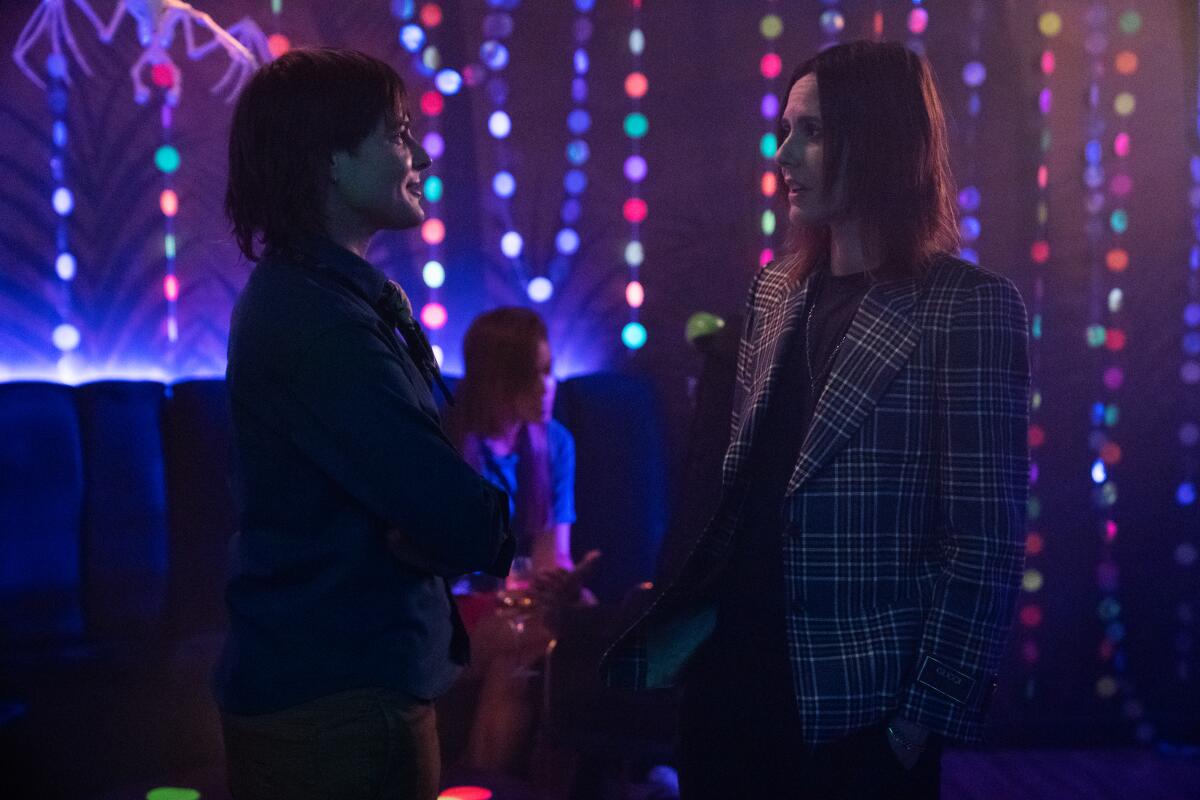
I know being a part of activist art communities in the U.S. and abroad is a big part of who you are and what you do, can you talk a little bit about that?
I have been living between Vienna and California since 2017, and have lived between Europe and California for most of my adult life, working as an artist and musician in a multitude of activist and avant-garde communities. I recently co-created a theater piece with the amazing artists Marissa Lôbo and Jota Mombaça. We worked together to create a decolonial theater piece, collaborating with Brazilian artists Ani Gonzala, Juliana Dos Santos and Indigenous leader Sônia Guajajara. I work through language, music and memoir in a practice that is expansive, crossing several mediums, and now circling back to mainstream acting, performance being central to my creative life. The industry has changed so much. Thanks in part to the work of trans and queer activists, organizations and professionals working in our industry, there is so much potential for fully conceived trans and non-binary characters in both the mainstream and the avant-garde.
As fans know, Max is a complicated character that you worked hard to bring humanity to. What has your relationship with Max been like over the last 17 years?
I’ve received so many letters and messages. People still stop me on the street. I have spoken to people about Max for the past 16 years. It is always a humbling experience because it was a significant honor to play this role which for many trans people was the first time they got to see themselves reflected in real life or in fiction. I brought myself to the character as well as my queer underground and trans experience into the role. Max for me was more than just a role I played. His experience and the way he was treated and misunderstood mirrored mine.
What does it mean for you to see Max come back to “The L Word” today?
To see Max happy, and to have his storyline be a reparative story and experience, made me really happy because he does live on as these characters do, especially since he was one of the first recurring trans characters on TV, and definitely the first recurring trans masculine cast member. Characters who are firsts such as Max live on in people’s imaginations and their hearts. I’m not aware of any other time that this kind of reparative storytelling has been accomplished for a trans character from television’s past.
This has been very cathartic for me to have this opportunity to revisit this character in such a restorative way. … It’s been a healing experience.
The complete guide to home viewing
Get Screen Gab for everything about the TV shows and streaming movies everyone’s talking about.
You may occasionally receive promotional content from the Los Angeles Times.
Do you feel like this new episode has changed your personal relationship with Max?
I don’t feel it’s changed. I guess this is where the magical thing comes in. As a child who grew up playing Dungeons and Dragons and reading fantasy and sci-fi, he’s real to me, in a certain sense, you know? He lives with me, he’s like a little brother, like a sibling that lives on in me. And he’s also partly me.
What do you hope for the future of trans and queer TV?
I want to see more of it! I want to see all kinds of stories being made! Also, it’s not enough to just make a great story. We have to ask, “How are these stories being made? How are people who have been historically excluded from our industry and storytelling being treated?” ... Within narrative storytelling we can ask ourselves, “What kinds of stories are we retelling? Are we replicating the same old tropes or is the industry making space for everyone, especially those traditionally marginalized by Hollywood, in order to ensure a brighter future, a future of mutual aid and care and trust?” We’re in such a sketchy moment in history. Those ideas will guide us to a better future.
We’re at the very beginning of something I never thought that I’d see in my lifetime. I never thought the mainstream would get hip to queer and trans knowledge. I thank the people who went before us to make this possible, everything they faced with bravery and brilliance, my peers and the young people for taking the space that was made and carrying the possibilities further, including gender stuff. There’s a lot more work to be done, this is just the beginning.
‘The L Word: Generation Q’
Where: Showtime
When: Sunday, 8 p.m.
Streaming: www.showtime.com, any time
Rating: TV-MA (may be unsuitable for children under the age of 17)
More to Read
The complete guide to home viewing
Get Screen Gab for everything about the TV shows and streaming movies everyone’s talking about.
You may occasionally receive promotional content from the Los Angeles Times.
